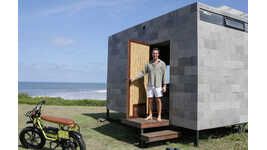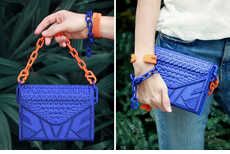Cleopatra is a leopard tortoise that no longer has to suffer from malnutrition and a tortoise shell deformity thanks to 3D printing. Before being saved by Colorado's Canyon Critters Rescue, for many years, Cleopatra was fed a diet that was too heavy in protein. Her imbalanced diet became evident as her shell showed signs of weakening and collapsing in a condition known as pyramiding. In order to help this pet live to a healthy age beyond 80, her diet was quickly balanced and a new prosthetic was created by student Roger Henry from the Colorado Technical University in order smooth out her shell. Over 600 hours went into the creation of the shell, resulting in a lightweight biodegradable prosthetic that perfectly fits over the tortoise's misshapen shell.
Beyond applications like these in the veterinary industry, 3D-printing continues to provide flexibility and customization for human prosthetics as well.
3D-Printed Tortoise Shells
A Bespoke Shell Extends the Life of an Unwell Tortoise
Trend Themes
1. Customized Prosthetics - The development of 3D-printed tortoise shells opens up opportunities for customized prosthetics in the veterinary industry.
2. Biodegradable Materials - The use of a lightweight biodegradable material for the tortoise shell suggests the potential for biodegradable materials in 3D-printed prosthetics.
3. Application in Human Prosthetics - The success of 3D-printed tortoise shells can lead to advancements in the use of 3D printing for flexible and customizable human prosthetics.
Industry Implications
1. Veterinary - The veterinary industry can explore the use of 3D printing for tailored and lightweight prosthetics for animals with shell deformities.
2. Biotechnology - The biotechnology industry can explore the development of biodegradable materials for 3D-printed prosthetics, inspired by the lightweight and biodegradable tortoise shell.
3. Medical - The medical industry can leverage 3D printing technology to create customized and flexible prosthetics for human patients.






